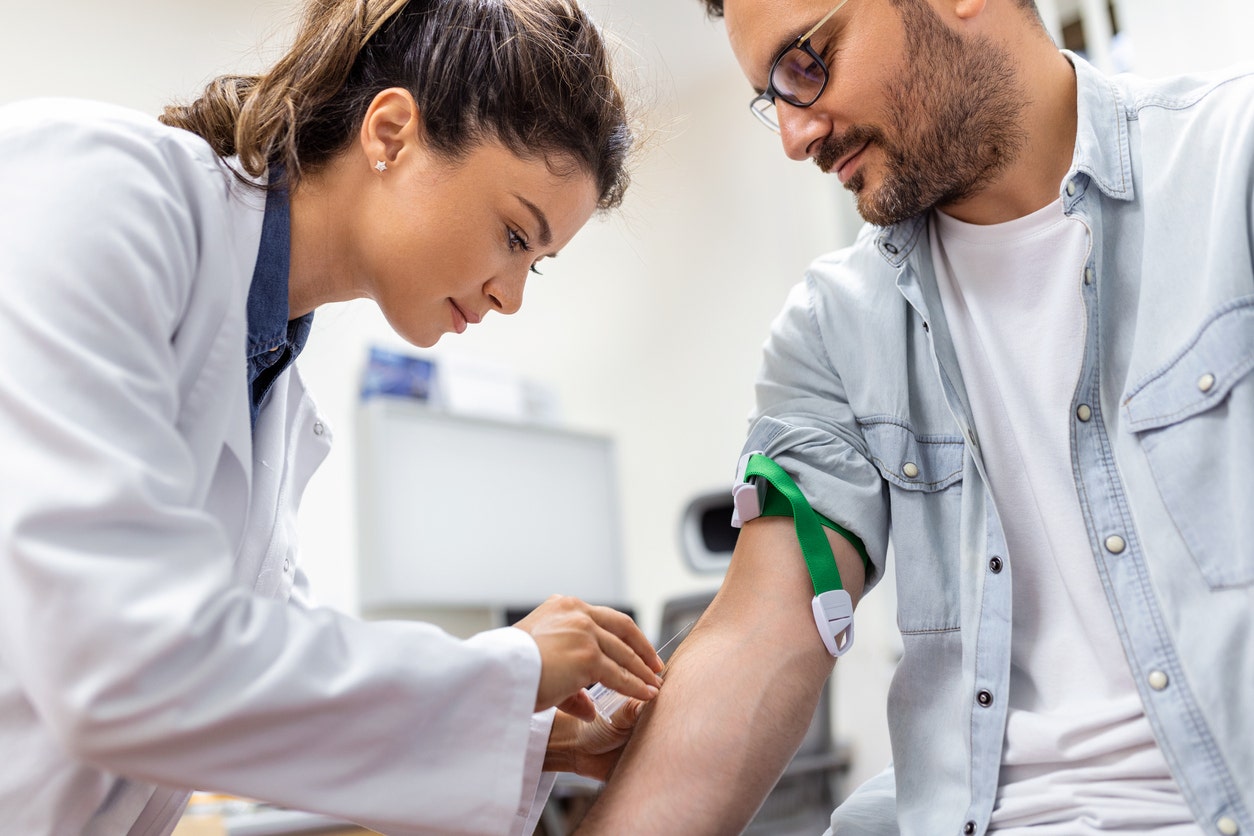Health
New FDA blood donation guidelines ease restrictions for gay and bisexual men

With new guidelines released by the U.S. Food and Drug Administration (FDA), blood donor eligibility now will be based on individuals’ responses to screening questions — rather than group-wide restrictions.
With the previous guidelines, men who have sex with men (MSM) faced restrictions when donating blood due to concerns about the spread of HIV from donor to recipient.
With the new relaxed rules, each donor candidate will be required to answer the same set of screening questions to determine potential HIV risk “regardless of sexual orientation, sex or gender.”
Eligibility then will be determined for each individual.
EVERYTHING YOU NEED TO KNOW ABOUT DONATING BLOOD DURING RED CROSS MONTH
“The FDA has worked diligently to evaluate our policies and ensure we had the scientific evidence to support individual risk assessment for donor eligibility while maintaining appropriate safeguards to protect recipients of blood products,” said Dr. Peter Marks, PhD, director of the FDA’s Center for Biologics Evaluation and Research in Washington, D.C., in a press release announcing the new guidelines.
With new guidelines released by the U.S. Food and Drug Administration (FDA), blood donor eligibility will be based on individuals’ responses to screening questions — rather than on group-wide restrictions. (iStock)
“The implementation of these recommendations will represent a significant milestone for the agency and the LGBTQI+ community,” he continued.
“The FDA is committed to working closely with the blood collection industry to help ensure timely implementation of the new recommendations and we will continue to monitor the safety of the blood supply once this individual risk-based approach is in place,” Marks added.
How restrictions have changed for gay and bisexual men
With the start of the HIV epidemic in the U.S. in the early 1980s, men who had sex with men were not permitted to give blood for fear they would spread human immunodeficiency virus, the virus that causes AIDS (acquired immunodeficiency syndrome).
The ban continued for more than 30 years.
BLOOD DONATIONS THIS WINTER: AMERICAN RED CROSS URGES PEOPLE NOT TO FORGET TO DONATE
In 2015, in light of new testing and treatment developments, the restrictions relaxed a bit — MSM were permitted to give blood if they hadn’t had sex with a man over the last 12 months.
The next change was in 2020, when the time frame for abstaining from sex with other men was reduced to three months.
Measures to ensure safe donations
Prospective blood donors will be required to fill out questionnaires to gauge their level of risk.
Anyone who reports having a new sexual partner, multiple sexual partners or anal sex over the past few months — regardless of sexual orientation — will not be permitted to donate due to the chance of recent and undetected HIV infection, per the FDA’s statement.

“The FDA is committed to working closely with the blood collection industry to help ensure timely implementation of the new recommendations and we will continue to monitor the safety of the blood supply once this individual risk-based approach is in place,” said Dr. Peter Marks, director of the FDA’s Center for Biologics Evaluation and Research. (iStock)
Anyone who is taking medications to treat or prevent HIV infection would also be “deferred” from donating.
Those medications include antiretroviral therapy (ART), pre-exposure prophylaxis (PrEP) and post-exposure prophylaxis (PEP).
“Though these antiretroviral drugs are safe, effective and an important public health tool, the available data demonstrate that their use may delay detection of HIV by currently licensed screening tests for blood donations, which may potentially give false negative results,” the FDA’s statement said.
“The issue needs to be based on medical risk, not demographics or political correctness.” — Dr. Marc Siegel
“The FDA strongly believes the implementation of an individual risk-based approach will not adversely affect the safety or availability of the U.S. blood supply,” the statement said.
The FDA’s new guidance is based on its review of data from countries that have implemented individual risk screenings as well as multiple studies measuring risk factors for HIV transmission during transfusions.
All donated blood is tested for certain antibodies that may cause adverse reactions in the recipient, per the Centers for Disease Control and Prevention (CDC).

Prospective blood donors will be required to fill out questionnaires to gauge their level of risk. (iStock)
It is also tested for hepatitis B and C, HIV, West Nile virus, bacterial contamination and any other pathogens.
“I applaud the FDA’s decision to follow science and not the biases that have guided previous blood donation policy with their new recommendations that apply to all Americans, regardless of sexual orientation,” Dr. David Kilmnick, president of the New York LGBT Network, told Fox News Digital.
CLICK HERE TO SIGN UP FOR OUR HEALTH NEWSLETTER
“Donating blood is a selfless act that helps to save lives, and this new ruling is a major step toward ending the discriminatory policy on blood donations that was rooted in fear and homophobia,” he also said.
“With our blood supply at a critical shortage, this ruling could not wait a day longer and will help to save lives.”
Dr. Marc Siegel, a professor of medicine at NYU Langone Medical Center and a Fox News medical contributor, advised caution, however.
“The issue needs to be based on medical risk, not demographics or political correctness,” he told Fox News Digital. “Because you could have a virus and test negative initially and then turn positive later, so it’s not foolproof.”
He added, “My suggestion would be to consider allowing it, but only with serial testing for these common diseases.”

Health
Semaglutide Pills and Injections Vs. Drops: Experts Weigh In | Woman's World

Sign Up
Create a free account to access exclusive content, play games, solve puzzles, test your pop-culture knowledge and receive special offers.
Already have an account? Login
Use left and right arrow keys to navigate between menu items.
Use escape to exit the menu.
Health
Jennifer Hudson Lost 80-Lbs Without Depriving Herself—Learn Her Secrets

Sign Up
Create a free account to access exclusive content, play games, solve puzzles, test your pop-culture knowledge and receive special offers.
Already have an account? Login
Use left and right arrow keys to navigate between menu items.
Use escape to exit the menu.
Health
Kennedy’s Plan for the Drug Crisis: A Network of ‘Healing Farms’

Though Mr. Kennedy’s embrace of recovery farms may be novel, the concept stretches back almost a century. In 1935, the government opened the United States Narcotic Farm in Lexington, Ky., to research and treat addiction. Over the years, residents included Chet Baker and William S. Burroughs (who portrayed the institution in his novel, “Junkie: Confessions of an Unredeemed Drug Addict”). The program had high relapse rates and was tainted by drug experiments on human subjects. By 1975, as local treatment centers began to proliferate around the country, the program closed.
In America, therapeutic communities for addiction treatment became popular in the 1960s and ’70s. Some, like Synanon, became notorious for cultlike, abusive environments. There are now perhaps 3,000 worldwide, researchers estimate, including one that Mr. Kennedy has also praised — San Patrignano, an Italian program whose centerpiece is a highly regarded bakery, staffed by residents.
“If we do go down the road of large government-funded therapeutic communities, I’d want to see some oversight to ensure they live up to modern standards,” said Dr. Sabet, who is now president of the Foundation for Drug Policy Solutions. “We should get rid of the false dichotomy, too, between these approaches and medications, since we know they can work together for some people.”
Should Mr. Kennedy be confirmed, his authority to establish healing farms would be uncertain. Building federal treatment farms in “depressed rural areas,” as he said in his documentary, presumably on public land, would hit political and legal roadblocks. Fully legalizing and taxing cannabis to pay for the farms would require congressional action.
In the concluding moments of the documentary, Mr. Kennedy invoked Carl Jung, the Swiss psychiatrist whose views on spirituality influenced Alcoholics Anonymous. Dr. Jung, he said, felt that “people who believed in God got better faster and that their recovery was more durable and enduring than people who didn’t.”
-
/cdn.vox-cdn.com/uploads/chorus_asset/file/25822586/STK169_ZUCKERBERG_MAGA_STKS491_CVIRGINIA_A.jpg)
/cdn.vox-cdn.com/uploads/chorus_asset/file/25822586/STK169_ZUCKERBERG_MAGA_STKS491_CVIRGINIA_A.jpg) Technology1 week ago
Technology1 week agoMeta is highlighting a splintering global approach to online speech
-

 Science1 week ago
Science1 week agoMetro will offer free rides in L.A. through Sunday due to fires
-
/cdn.vox-cdn.com/uploads/chorus_asset/file/23935558/acastro_STK103__01.jpg)
/cdn.vox-cdn.com/uploads/chorus_asset/file/23935558/acastro_STK103__01.jpg) Technology1 week ago
Technology1 week agoAmazon Prime will shut down its clothing try-on program
-

 News1 week ago
News1 week agoMapping the Damage From the Palisades Fire
-
/cdn.vox-cdn.com/uploads/chorus_asset/file/25826211/lorealcellbioprint.jpg)
/cdn.vox-cdn.com/uploads/chorus_asset/file/25826211/lorealcellbioprint.jpg) Technology7 days ago
Technology7 days agoL’Oréal’s new skincare gadget told me I should try retinol
-
/cdn.vox-cdn.com/uploads/chorus_asset/file/25832751/2192581677.jpg)
/cdn.vox-cdn.com/uploads/chorus_asset/file/25832751/2192581677.jpg) Technology3 days ago
Technology3 days agoSuper Bowl LIX will stream for free on Tubi
-

 Business5 days ago
Business5 days agoWhy TikTok Users Are Downloading ‘Red Note,’ the Chinese App
-
/cdn.vox-cdn.com/uploads/chorus_asset/file/25835602/Switch_DonkeyKongCountryReturnsHD_scrn_19.png)
/cdn.vox-cdn.com/uploads/chorus_asset/file/25835602/Switch_DonkeyKongCountryReturnsHD_scrn_19.png) Technology1 day ago
Technology1 day agoNintendo omits original Donkey Kong Country Returns team from the remaster’s credits














